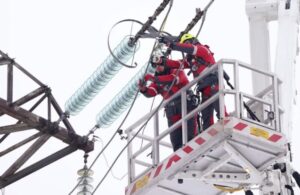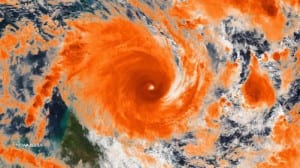Victorian Energy Efficiency Certificates (VEECs)

Things are becoming predictable in the Victorian Energy Efficiency Certificate market, even if what’s predictable is the supply side’s ability to surprise. And so passed June, another month, another massive run of VEEC submissions and a corresponding drop in spot prices. Yet the softening spot and rumours of potential changes saw a premium emerge in the longer dated forward market.
Since it became obvious that the VEEC market would be considerably oversupplied in 2017, the spot VEEC price has been in steady decline.
Yet just when it seemed supply would fall, it instead jumped in May owing to the successful roll out of high bay LED lighting.
In June, VEEC submissions continued to climb with the 4 week rolling average first broaching the 200k level early in the week before ultimately smashing through that level on the back of a surge in submissions in the last week of June before the final cut-off date for the uploading of 2016 vintage certificates.

Unsurprisingly, the spot VEEC market lost ground across the month, though there were several periods when support ultimately emerged in the market.
Having opened at $11.20, the spot made it to a low of $10.50 in the middle of the month before several times returning to trade at $11.00.
The weight of submissions was sufficient to bring the market to a close at $10.80, a drop of 3.6% on May’s close.
Yet by far the more intriguing trading activity for the month took place in the forward market, where, despite the strong submission numbers, an above normal rate of escalation was paid by buyers.
The premium for the forwards occurred predominantly in the longer dated tenors, for settlement in Apr18 and beyond.
Rather than the usual 2.5-3% carry that frequently prevails, the later dated 2018 forwards were regularly trading in the 5-6% region, reflecting a genuine lack of selling interest in the period.
The lack of longer dated sellers appears to be a combination of several factors. The first is that the current pricing is seriously depressed, making it hard for installers to operate even on lean margins and the cheapest products.
Prices have been pushed down because of the growth in installation of high bays lighting, which is now easily the lowest cost technology. Yet at current prices even those installing high bays are struggling.
Yet there have also been increasing rumours of potential changes to the scheme that may be looming, with speculation of a consultation paper which some believe may end up impacting either on the lowest cost technology or potentially on commercial lighting more generally.
The speculation has gone down many paths, with some thinking that a reduction in the deeming period (which would ultimately reduce the number of VEECs created per product installed) a possibility, or perhaps even the introduction of a minimum co-payment from customers similar to that used in NSW.
Time will tell whether there is any accuracy to this speculation but it has introduced an additional element of doubt into the considerations of potential forward sellers.
However, given current rates of VEEC creation, should no changes be made and supply continue at current levels, it seems inevitable that prices will fall further as the already hefty surplus grows.
Yet there are a growing number of people seemingly prepared to bet that things will change and this is nowhere more evident than in the premiums being paid in the forward market.
New South Wales Energy Savings Certificates (ESCs)

Prices as at 30th June 2017
The toll of a mounting surplus in the ESC market was great across June, with heavy losses following the record supply numbers that eventuated. The 2017 target has now been met and considerable inroads are being made in to 2018.
With ESC registration figures remaining strong, the spot ESC market continued to lose ground across June, opening at $14.50 and sliding steadily across most of the month.
The most spectacular price movements however were reserved for the final week of June.
The end of the financial year is typically a big one in the ESC market, because it coincides with the cut-off date for the registration of the previous year’s ESCs.
In recent years the 30 June deadline has resulted in some large eleventh hour registrations, so this year there was an expectation of some fireworks.
What ultimately transpired however stunned everyone and for several reasons.
The record weekly registration of 729k was enough to grab the attention of the market, with over 18% of the 2017 target being registered in a single week.
But what also surprised many was the considerable proportion of 2017 vintage ESCs that emerged in that week, implying a level of activity across 2017 (where prices have been considerably lower), well above what many had anticipated.
It may be the case the some of the additional 2017s registrations during the period took place to miss the cut-off for rule changes to the air conditioning multiplier and the elimination of payment plans, which also had a deadline of 30 June.

When the dust had settled on that record registration week, there were 4.93m live ESCs available to meet the 2017 target of approximately 4m, with another 9 months in which to create 2017 vintage ESCs before the final compliance date.
The spot market began the final week of June at $13.60, yet by week’s end the massive registrations had seen the spot down to end the month at $12.60, a drop of 14.6% on May’s close.
As an aside, the passage of the 30 June deadline provides a unique snapshot of the ESC surplus on a vintage basis.
At 30 June 2016, there were 3.3m 2015 (or earlier) vintage ESCs left un-surrendered. As at 30 June 2017, there was 3.77m 2016 (or earlier) vintage ESC still in circulation, an almost 500k growth in the surplus over the 12 month period.
Many participants are now asking where to from here? First up, the next month or two’s registration volumes will be particularly important, for if no clear evidence of a reduction emerges, then the downward pressure will likely continue.
If 2017 ESC registrations were brought forward by the rule change deadline then perhaps there will be a slower period ahead.
The steep reductions in price do also appear likely to flow through to sales, though there is of course always a considerable lag between sales and ESC registration. Counter balancing this will be the demand arising from the spike in electricity prices and the pressure on businesses and households to try to reduce their consumption.
And to add another factor to the pile, the sharp drop in the ESC price will also make it considerably more appealing for creators to buy back instead of installing and that may also have an impact in the medium term.
Marco Stella is Senior Broker, Environmental Markets at TFS Green Australia. The TFS Green Australia team provides project and transactional environmental market brokerage and data services, across all domestic and international renewable energy, energy efficiency and carbon markets.








